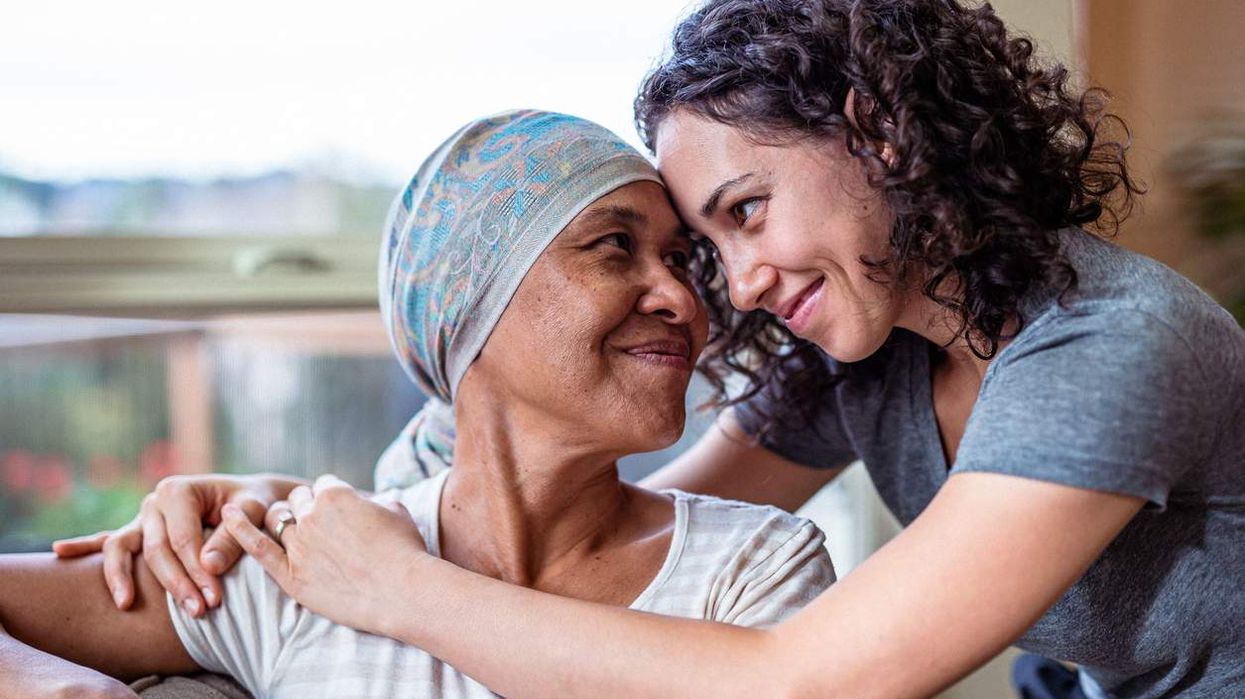Metastatic Melanoma 101
Breast Cancer Meets AI: A New Era of Risk, Detection and Treatment
October 14, 2025I Kept My Menopause Symptoms a Secret
October 15, 2025
Sun screen, big hats, UPF clothing – you probably know how to protect yourself from harmful sun rays that can cause skin cancer. You may have even heard of melanoma and know that it’s the most dangerous form of skin cancer. But did you know that melanoma can spread to parts of the body other than the skin?
Melanoma is cancer that happens when the melanocytes (cells that make color, called melanin) grow abnormally and out of control. One of the reasons melanoma is so dangerous is because it grows fast and can easily spread to other parts of the body.
Here’s what you need to know about metastatic melanoma.
What is metastatic melanoma?
Metastatic melanoma is when the cancer spreads to other parts of the body. When cancer is metastatic, it’s considered more advanced and more difficult to treat.
Melanoma can spread to:
- Other parts of the skin
- Eyes
- Brain
- Lymph nodes
- Lungs
- Liver
- Abdomen
- Bones
How does melanoma spread?
Melanoma cells typically spread by entering the bloodstream then passing to other parts of the body. Sometimes melanoma cells first pass through the lymphatic system, which is the tissues and organs that help your body fight disease. When this happens, it’s easier for the melanoma cells to enter into the bloodstream and spread more quickly.
There aren’t clear signs if or when melanoma will spread to other parts of the body. Catching melanoma early is the best way to prevent it from spreading. When it does spread, it’s harder to treat. And melanoma isn’t diagnosed early at the same rates for everyone. About 1 in 3 Black patients are diagnosed at an advanced or metastatic stage (stage 3 or 4) compared to just over 1 in 10 white patients.
What are the risk factors for metastatic melanoma?
Certain factors can put you at higher risk of developing metastatic melanoma:
- Having a close family member like a parent, child or sibling who has had the disease
- Having one or more severe, blistering sunburns in your lifetime
- Being exposed to ultraviolet (UV) light from the sun or tanning beds
- Having more than 50 moles on your body
- Living close to the equator or at higher elevations
- Having light colored skin or eyes or blonde or red hair
- Getting freckles or sunburns easily
- Having a weakened immune system from a condition or medication
What are the symptoms of metastatic melanoma?
As many as 8 out of 10 melanomas happen on normal-looking skin, so it can be difficult to find. Understanding the symptoms of melanoma and getting regular skin checks from a dermatology provider can lead to an earlier stage diagnosis before the melanoma spreads.
Know your ABCDEs:
A – Moles or growths that are asymmetrical
B – Moles or growths with an irregular border
C – Moles or growths with multiple colors
D – Moles or growths with a diameter larger than a pencil eraser
E – Moles or growths that have evolved to a bigger size or thickness
Melanoma might show up differently in people with darker skin. Remember CUBED for parts of your skin that don’t typically see the sun:
C – Colored growths on parts of the skin where there isn’t usually color
U – There’s an uncertain diagnosis for any growth on the skin
B – The growth or lesion is bleeding or leaking fluid
E – The spot is growing or evolving in size and shape
D – There’s a delay in healing. The growth takes longer than two months to heal.
When melanoma spreads to other parts of the body, additional symptoms might include:
- Swollen lymph nodes
- Bone pain
- Bloody poop
- Shortness of breath
- Seizures
What are the treatment options available?
Treatment for melanoma depends on your individual health, type of tumor and how far and where the cancer has spread. Your healthcare provider might recommend surgery to remove the original tumor and any tumors in the lymph nodes. Radiation therapy to shrink the tumors is sometimes done either on its own or in combination with surgery. Chemotherapy is also a treatment option, though it’s not typically used as the first choice for melanoma.
Another treatment option is immunotherapy. This treatment style involves oral or intravenous (through a vein) medications that work with your immune system to target and kill cancer cells. There are a few different kinds of immunotherapies. The one you received will depend on the type of tumor you have and whether there are any genetic mutations in your tumor.
Prevention is key
You can’t change the genes you’re born with, but you can prevent other risk factors. Eating a healthy diet, avoiding tobacco and alcohol (which can weaken your immune system), practicing strict sun protection, and getting annual skin exams can help decrease your risk of developing melanoma.
Resources
This educational resource was created with support from Merck.

